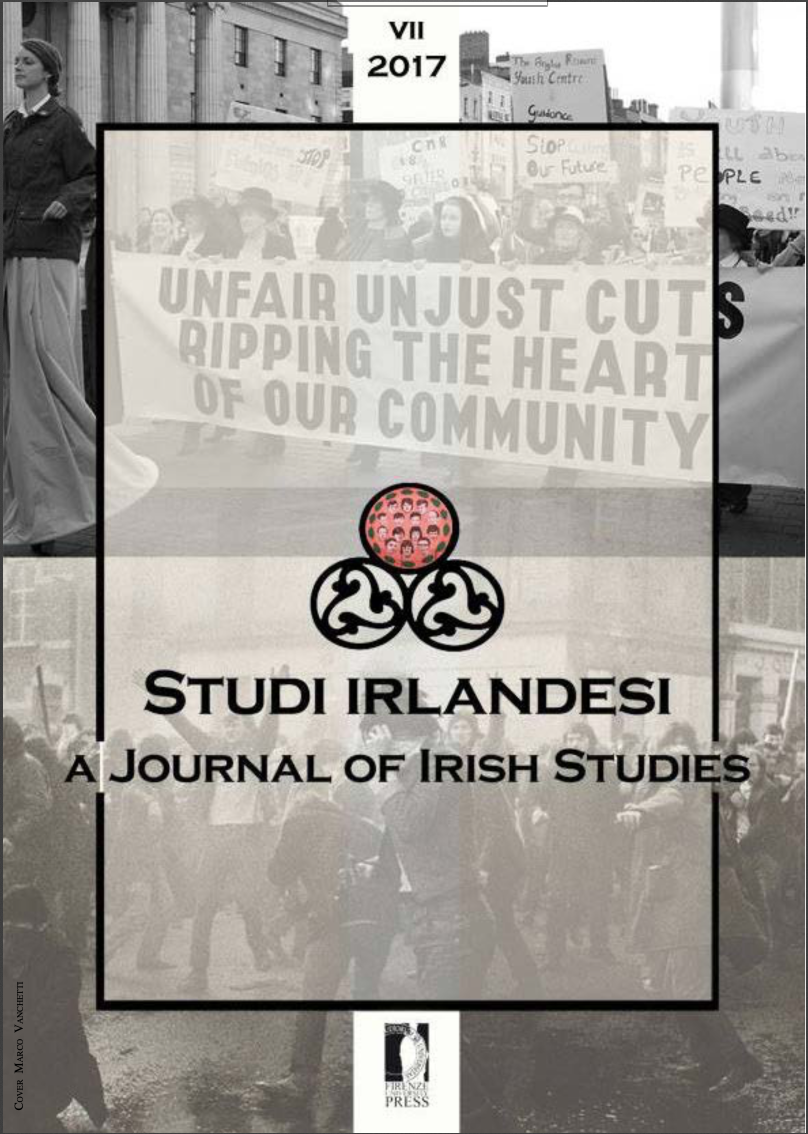Published 2017-06-08
How to Cite
Abstract
Dermot Healy’s Fighting with Shadows (1984) features a broad array of technical innovations: the narrative focus shifts, temporal frames vary, and the inner and outer worlds of the characters frequently interchange, all generating a sense of a world that forever lies just out of sharp focus. Far from being a failure of observation, this registers a way of seeing that extends beyond merely linear modes of representation and is suggestive of a world that is not a neat, easily-observed set of phenomena. In this, Healy’s first novel, a compelling interdependence between complex narrative experiment and deeply-felt social and political engagement with the Northern Troubles is already evident. Healy’s work has always been firmly about resistance to received forms, political fixities, social malaise, and the limits of consciousness itself – and all in a richly-textured Irish landscape. This essay offers detailed analysis of how Fighting with Shadows exemplifies such acts of resistance while seeking to engage with Healy’s provincial Irish context.


